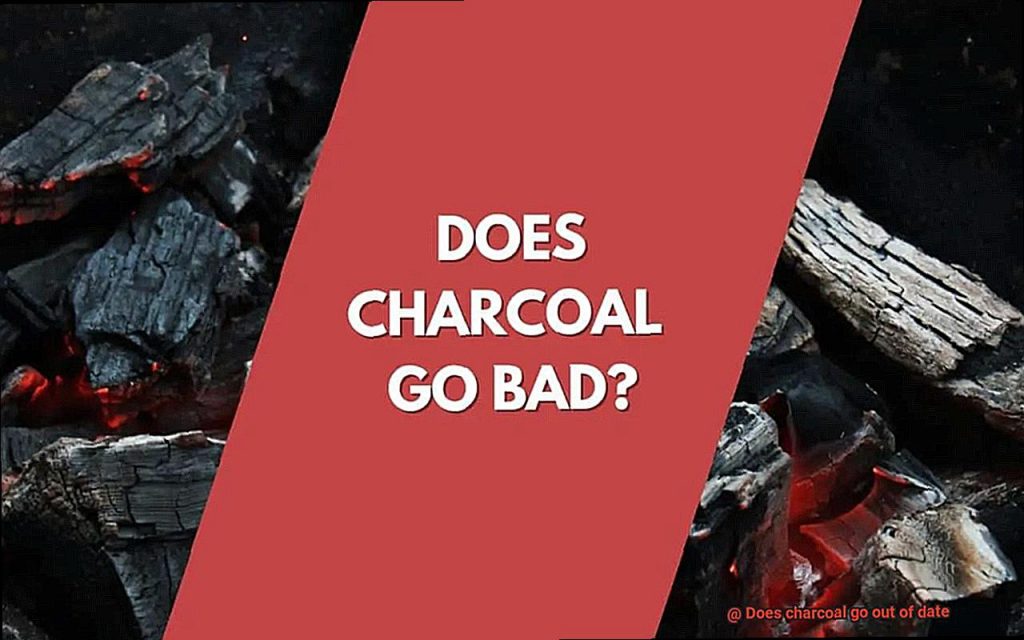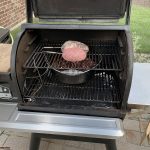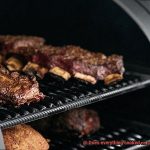Charcoal – the versatile fuel that has been used for centuries. Whether you’re grilling up a storm or creating a masterpiece on paper, charcoal has found its way into various aspects of our lives. But what happens when that bag of charcoal sitting in your garage is years old? Can you still use it?
The answer is not as straightforward as you might think. While charcoal doesn’t technically have an expiry date, it can go stale over time. This means that it may not light up as quickly or burn as evenly as fresh charcoal would. Plus, exposure to moisture, humidity, and air can render it useless.
So before you start planning that summer BBQ with your old stash of charcoal, there are a few things you need to know. In this blog post, we’ll explore the factors that affect the shelf life of charcoal and some simple steps you can take to ensure its longevity.
From proper storage techniques to tips on how to tell if your charcoal is still good to use, we’ve got you covered. So let’s dive in and find out if your old bag of charcoal is still worth using.
Contents
What is Charcoal?
For thousands of years, humans have been utilizing the unique properties of charcoal. This porous black solid is made by heating wood or other organic materials in the absence of air, a process known as pyrolysis. In this article, we will delve into the fascinating world of charcoal by examining what it is, its types, and its various uses.
Charcoal is a carbon-rich residue that remains after volatile compounds are released from wood during pyrolysis. This versatile material has a wide range of uses in different industries and is commonly used for fuel, cooking, and industrial purposes.
Types of Charcoal
There are two main types of charcoal: lump charcoal and briquettes. Lump charcoal is made from natural wood and is considered to be the purest form of charcoal. It burns hotter and faster than briquettes and produces less ash. Briquettes, on the other hand, are made from compressed charcoal dust mixed with a binder. They burn longer and are more affordable than lump charcoal.
Uses of Charcoal
Charcoal has numerous uses that make it valuable in various industries. Its most common use is as a fuel source for grilling and smoking food. Compared to wood, charcoal burns hotter and longer, making it ideal for cooking. Additionally, it produces less smoke and imparts a unique smoky flavor to food.
Charcoal is also used in industrial applications such as water filtration, air purification, and metal smelting. Its porous nature allows it to absorb impurities from water and air. Moreover, it has high carbon content, making it an ideal fuel for metal smelting.
Furthermore, charcoal is used in medicine as a treatment for poisoning and overdose because it can absorb toxins and prevent them from being absorbed by the body.
Does Charcoal Go Out of Date?
If so, you must be aware of the importance of having high-quality charcoal for your outdoor cooking adventures. But have you ever wondered if your stash of charcoal has an expiration date? Well, the good news is that charcoal is not like your favorite food item that goes bad after a certain period. It’s not like milk that goes sour or bread that becomes stale. However, there are a few things to keep in mind to ensure your charcoal is performing at its best.
First up, we have moisture. Charcoal is made from wood, which contains moisture. If your charcoal becomes damp, it can be difficult to light and affect the heat output and cooking time. This means that your perfectly marinated chicken breasts may end up being undercooked or unevenly cooked. So, make sure to store your charcoal in a dry place, like a garage or shed. You don’t want to be caught in a rainstorm with your bag of charcoal. Moreover, if you’re using an old bag of charcoal that has been sitting in your garage for months, it’s important to check for signs of moisture damage before lighting it up.
Next on the list is exposure to air. Charcoal can absorb air over time and become less efficient at igniting and producing heat. This means that your burgers may not cook as evenly as you’d like them to. To prevent this from happening, store your charcoal in an airtight container or bag. This will help preserve the quality and performance of your charcoal.
Lastly, it’s important to keep in mind that different types of charcoal have different shelf lives. Briquettes have a longer shelf life than lump charcoal because they are made from compressed sawdust and other materials. On the other hand, lump charcoal is made from natural hardwood and has a shorter shelf life. Regardless of the type of charcoal, it’s still important to check for signs of damage or deterioration before using it. Nobody wants a bad batch of charcoal ruining their backyard BBQ.
Factors That Can Affect the Quality and Performance of Charcoal Over Time
Let’s explore these factors and discover how to maintain optimal charcoal quality.
Firstly, moisture is a major contributor to deteriorating the quality of charcoal. Charcoal is made from wood that naturally contains moisture. However, exposure to additional moisture after production can cause the charcoal to become damp and difficult to light. Damp charcoal can result in uneven burning and reduced heat output, ultimately ruining your grilling experience. To avoid this, always store your charcoal in a dry and ventilated area away from moisture and humidity.
Storage plays a significant role in maintaining the quality of your charcoal. Extreme temperatures or sunlight exposure can also affect the quality of your charcoal. To prevent this, store your charcoal in a cool, dry place away from direct sunlight and any other elements that may cause it to deteriorate.
The type of wood used to make the charcoal can also impact its quality and performance. Hardwoods such as oak, hickory, and maple are popular choices for making high-quality and long-lasting fuel sources. On the other hand, softwoods or scrap wood may produce lower quality charcoal that burns quickly and produces less heat. Therefore, it’s essential to choose high-quality hardwoods for optimal performance.
Lastly, the age of your charcoal can also impact its potency over time. As charcoal ages, it loses its effectiveness at producing heat. For best results, always use fresh charcoal within a year of purchase.
How to Store Charcoal Properly
To ensure that your charcoal remains dry, safe, and effective for all your grilling needs, consider the following tips on how to store charcoal properly:
Keep it Dry
Moisture is the enemy of charcoal. It can cause charcoal to clump together, making it difficult to light, and reducing its effectiveness. Therefore, it’s crucial to store charcoal in a cool, dry place away from any moisture. Using airtight containers or bags can help keep out moisture.
Keep it Away from Heat Sources
Charcoal is highly flammable and should be stored away from any potential ignition sources such as open flames or heat sources. Any exposure to heat or flames can cause the charcoal to ignite, resulting in a potentially dangerous situation.
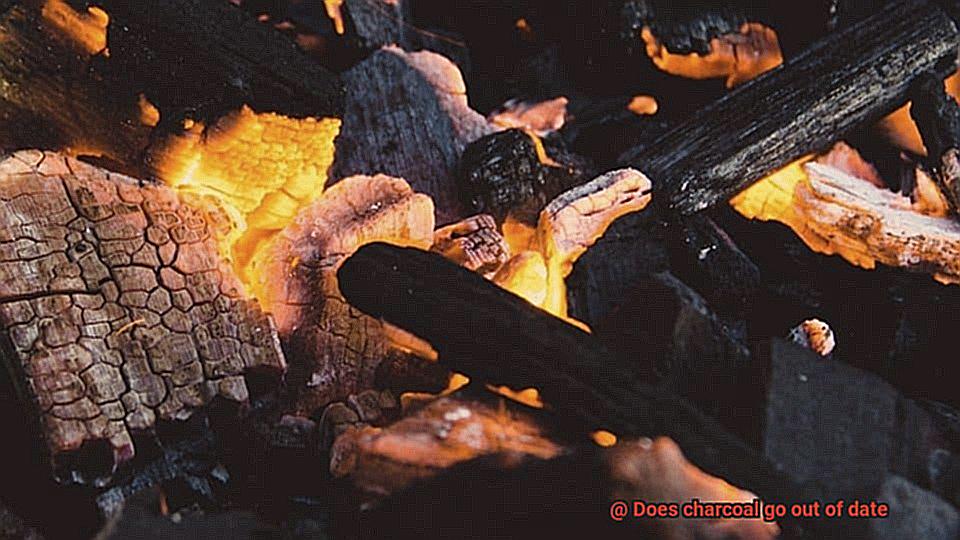
Keep it Away from Chemicals or Substances
Charcoal should be stored separately from lighter fluid, gasoline, or any other flammable liquids that could affect its potency or safety. Storing charcoal with these substances can lead to a potentially hazardous situation.
Don’t Mix Old and New Charcoal
Old charcoal that has been exposed to air and moisture may not burn as effectively as fresh charcoal. Therefore, mixing old and new charcoal can result in uneven heating and a less-than-ideal grilling experience. It’s crucial not to mix old and new charcoal when storing it.
Consider Adding Preservatives
If you plan on storing the charcoal for longer periods of time, you may want to consider adding some preservatives to help extend its shelf life. Potassium nitrate is a common preservative used for charcoal, which can be purchased at most hardware stores. Mixing potassium nitrate with water and spraying it onto the charcoal before storing it can help prevent the charcoal from breaking down and becoming unusable over time.
Store Charcoal Off the Ground
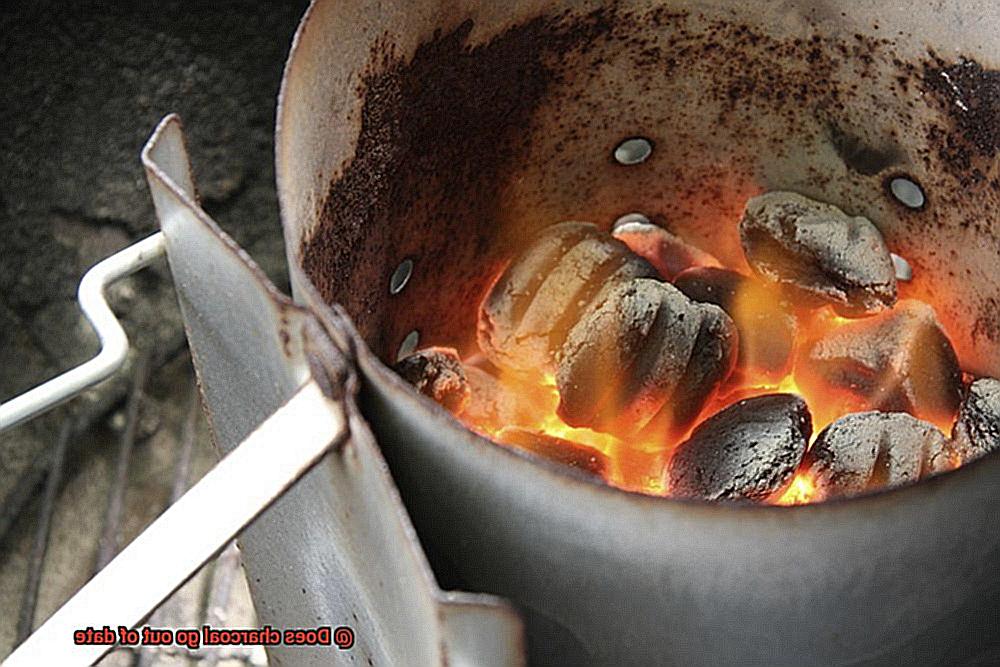
It’s essential to store containers or bags of charcoal off the ground to prevent any moisture from seeping in. Moisture from the ground can cause the charcoal to absorb moisture, reducing its effectiveness and shelf life.
The Benefits of Storing Charcoal Properly
In this article, we’ll explore the many benefits of storing charcoal properly and share some tips on how to do it like a pro.
The first benefit of storing charcoal properly is that it extends its shelf life. Charcoal can last for many months or even years when stored in a dry and cool place. This means that you can stock up on charcoal and not worry about having to replace it frequently due to poor quality. Plus, buying in bulk and storing it properly can save you money in the long run.
Another advantage of storing charcoal correctly is that it helps maintain the quality of your fuel source. When exposed to moisture or humidity, charcoal can become brittle and break apart easily, making it difficult to light and control the temperature of your grill. But when stored in a dry and cool place, it remains dense and compact, making it easier to light and control the heat.
Proper storage also ensures that your charcoal is always ready to use when you need it. When stored correctly, you won’t have to waste time struggling to light your charcoal or dealing with ineffective fuel. Instead, you can focus on grilling delicious food for your family and friends.
So, what can you do to ensure proper storage? First and foremost, keep your charcoal dry and away from heat sources and chemicals. Don’t mix old and new charcoal as this can affect its quality. Consider adding preservatives to extend its shelf life. And store it off the ground to prevent moisture from seeping in.
Common Mistakes When Storing Charcoal
Don’t let common mistakes like these ruin your grilling game. As an expert in this area, let me guide you through the do’s and don’ts of storing charcoal.
Firstly, dry and cool storage is key. Charcoal is highly susceptible to moisture and humidity, making it difficult to ignite if it gets damp. Avoid storing your charcoal in damp or humid areas like basements or garages. Instead, keep it in a cool and dry place such as a shed or closet.
Another mistake people make is leaving charcoal in its original packaging for too long. The bags that charcoal comes in are not designed for long-term storage and can easily get damaged over time. This can lead to moisture and other contaminants getting into the bag and affecting the quality of the charcoal. Transfer your charcoal to an airtight container or a metal bin with a lid to prevent any damage or contamination.
It’s also important to keep your charcoal away from flammable materials and chemicals. Charcoal is highly combustible, and coming into contact with flammable materials can cause it to ignite and create a dangerous situation. Store your charcoal away from anything that could potentially ignite it.
Lastly, avoid storing your charcoal in direct sunlight or extreme temperatures. High temperatures can cause the charcoal to break down and become less effective over time, while direct sunlight can cause the bags to break down and become damaged. Keep your charcoal in a shaded area where it won’t be exposed to extreme temperatures or direct sunlight.
How to Tell if Your Charcoal is No Longer Good for Use
Grilling season is upon us, and nothing ruins a barbecue faster than bad charcoal. But how can you tell if your charcoal is still good for use? Here are five sub-sections to help you determine if your charcoal is up to par.
Check the Expiration Date
The first step in determining whether your charcoal is still good is to check the expiration date. Charcoal typically has a shelf life of around two years from the production date. If your bag of charcoal is past this date, it’s best to replace it. Over time, exposure to air and moisture can cause the charcoal to break down, making it less effective.
Inspect for Moisture
Moisture is one of the biggest culprits when it comes to bad charcoal. Damp charcoal is difficult to light and won’t burn as hot or as long as dry charcoal. To check for moisture, simply feel the charcoal with your hands. If it feels wet or cold, it’s likely been exposed to moisture. Additionally, look for signs of mold or mildew on the charcoal. If you see any, it’s time to toss it out.
Visual Inspection
Take a close look at the charcoal before using it. Good quality charcoal should be uniform in size and shape, with no signs of damage or discoloration. If the charcoal appears dusty or crumbly, it may have been exposed to moisture and could be difficult to light. Also, look for any signs of debris or foreign objects in the bag.
Perform a Simple Test
Another way to tell if your charcoal is still good for use is to perform a simple test. Take a handful of charcoal and place it in a bowl of water. If the charcoal sinks, it’s still good. If it floats, it has absorbed too much moisture and should not be used. You can also light a small amount of charcoal to observe how it burns. Good quality charcoal should ignite quickly and produce a steady flame with minimal smoke. If your charcoal takes a long time to light or produces excessive smoke, it may be old or damp and should be replaced.
Store Your Charcoal Properly
Finally, one way to ensure that your charcoal stays good for use is to store it properly. Keep the bag in a cool, dry place away from moisture and direct sunlight. It’s also important to seal the bag tightly after each use to prevent exposure to air.
ieRNhjBIN_M” >
Conclusion
In summary, while charcoal may not have an official “use by” date, it can lose its potency over time and become less effective at generating heat. This is due to various factors such as exposure to air, moisture, and humidity that can impact the lifespan of charcoal.
To keep your charcoal in top-notch condition, proper storage techniques are crucial. These include storing it in a dry location away from heat sources and chemicals, keeping it elevated off the ground, and transferring it to an airtight container or metal bin with a lid.
It’s also important to select high-quality hardwoods for optimal performance and to inspect old charcoal for signs of damage or deterioration before using it. If you plan on storing your charcoal for an extended period of time, consider adding preservatives like potassium nitrate to help prolong its shelf life.
By following these guidelines and steering clear of common mistakes like leaving charcoal in its original packaging for too long or exposing it to direct sunlight or extreme temperatures, you can maintain the quality of your fuel source. Don’t forget to check for moisture before use by performing simple tests like the bowl of water test or lighting a small amount to observe how it burns.
With these precautions in mind, you can relish the versatility and convenience of this fascinating substance for years on end.

